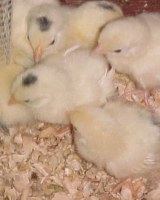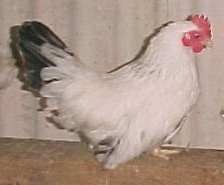Japanese Bantams

One of the curiosities in the world of poultry is the Japanese Bantam. This charming miniature attracts more than its share of attention from the viewing public at poultry shows in Australia. This bantam was distributed around the world by exports from Japan where it has been bred to a high standard of perfection. The Japanese are a competitive people very drawn towards the extremes both in their sport and in animals. There they are called 'Chabos' which actually translates to South China and this is their actual origin. Whether they still exist in that area is a matter purely for conjecture because no investigation has been carried out in modern times.
There would be little value in getting Japanese Bantams as a laying flock because apart from their minute eggs the hens lay very few each year. Their chief value is as a garden, aviary or show bird. As a garden bantam they are ideal, doing minimal damage to plants due to their small size and short legs. As an aviary bird they are magnificent requiring only a modicum of care. Their short legs and long tails are a feature that endears them to all who see them. Aviary and garden fanciers are advised to allow the hens to sit on their own eggs and brood the chicks themselves.

As an exhibition bantam, however, they are a more difficult proposition. They are able to reproduce in small numbers and do better being hatched by the hens than in incubators. The breed requirement for long tails on a short body supported by very short legs takes some skill to produce. The preparation of a Japanese bantam for top honours in the show arena requires diligence and attention to detail but once these attributes are applied they are capable of taking out the Champion in Show awards.
There are many colours recognised in Japanese Bantams but the most popular Australian colours are the Black-tailed white, White and Birchen varieties. The traditional heritage colour has always been and still is the Black tailed white and a male from this variety when shown in the peak of show condition and in full bloom is very difficult to beat.
 HERITAGE POULTRY STUD
HERITAGE POULTRY STUD